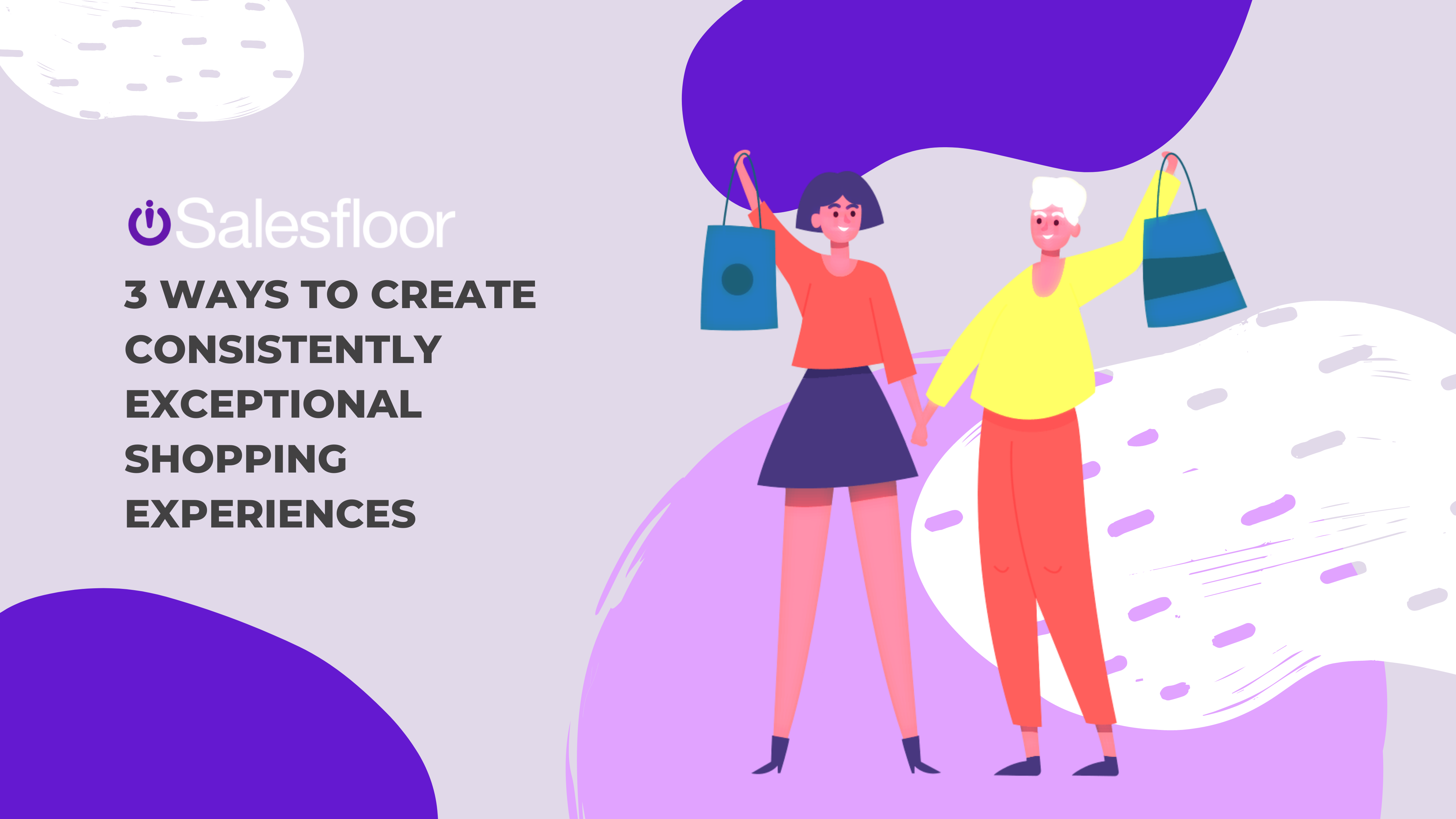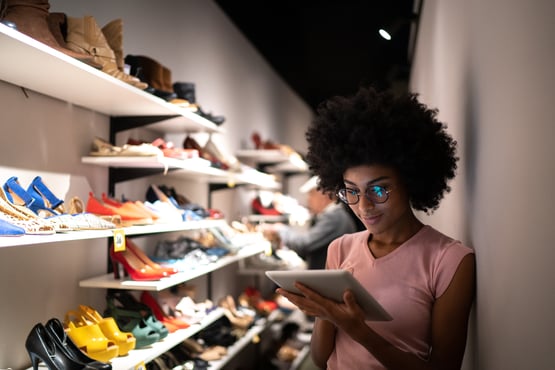3 min read
3 Ways to Create Consistently Exceptional Shopping Experiences
![]() David Campbell
:
Mar 16, 2022
David Campbell
:
Mar 16, 2022

Human beings are a dichotomous bunch. We seek out what’s new and fresh in the world, waiting for the next big hit song, the latest instalment of a superhero movie mega-franchise, or the next version of a beloved video game.
And yet, that new hit single will likely feature some very familiar sounds, that superhero movie better not stray too far from the franchise’s well-established format, and that video game’s core mechanic had better be mostly the same as the last three versions even if the level design is ingeniously innovative.
Unsurprisingly, the same is true of retail shopping experiences. Now that the honeymoon between online stores and customers has ended, it’s not enough for retailers to offer omnichannel shopping options; they have to provide unified, cohesive shopping experiences both online and off that build brand loyalty and recognition. A generic online storefront with your logo across the top won’t cut it. Today’s retailers need to offer new and exciting shopping experiences across all their channels, in a familiar and comfortable fashion.
1) Get Back to Basics
That familiarity is where we’ll start. When it comes to creating consistency across your channels, the first thing you want to ensure is that you’re nailing the basics like marketing and messaging. Your physical stores, your online stores, your virtual stores, and your 3rd party marketplaces (like Amazon’s or Facebook’s) should focus on the same look, feel, and messaging.
This doesn’t mean you can’t send out personalized promotions and recommendations (indeed, as you’ll read, you should be personalizing as much of your operation as possible), but it does mean having a cohesive vision for your brand throughout all possible channels, and may require investment in additional technical and marketing assets.
2) Take Stock of Your Stock
Inventory control and management used to be one of those back-of-store operations that was often forgotten about when it came to the live customer experience. Prior to the arrival of real-time inventory control and near-instant internet-enabled communications, consumers’ only option when seeking out a hard-to-find item was to inquire with an associate if there were more of it in the back. It could be jarring and sometimes left customers unsatisfied.
But that was then, and this is now. “Jarring” and “sometimes” “unsatisfied” no longer adequately describe the irritation customers feel nor the damage that can be done to brand loyalty if reported and real inventory levels disagree. The wonders of today’s advanced technology are great, but they’re also common. Everyone knows that retailers have the capability to track their inventory accurately. More importantly, everyone expects retailers to track stock accurately.
There is very little that can turn a customer off a brand faster than checking a site for availability at a physical store, only to discover the item was sold online days ago, especially when the customers themselves know that better options are available. Nothing helps a brand achieve consistency in its experience like actual consistency, so using a single, integrated system that can keep inventory levels synced across all sales channels is a major component of creating consistent experiences.
3) Recreate the Digital Experience In-Store
We all have a natural tendency to assume that the benefits and growth gains that technology enables are a one-way street. Heck, we here at Salesfloor regularly champion recreating the live experience in digital environments. but did you ever stop to wonder if the opposite ever occurred, and if live sales channels could learn a thing or two from online ones? The answer is of course yes, though retailers have yet to embrace it. In fact, Retail Science notes that while 87% of customers expect it, only 53% of retailers recognize it as a priority. “It” in this case being personalization.

To be fair, personalization isn’t the exclusive domain of online sales, but it’s definitely an area of the shopping experience where digital stores excel. That’s because it’s easy to record, store, and analyze customer profile information and purchasing habits in an online environment. There’s just no way a live sales associate can compete with that. Nevertheless, as CEO of Paladin Data Dan Nesmith told Retail Science, “Due in part to the evolution of retail, which now offers more personalized choices from eCommerce companies, shoppers want similar features from their neighborhood stores.” This idea is further supported by the retail gurus at McKinsey & Group, who point out that omnichannel personalization can lift revenues across your entire customer base by as much as 15%, driven primarily by the fact that 80% of transactions are still live.
But how? Well, there are plenty of AI-powered apps that plug into digital stores to record clients’ online purchases, analyze their habits, and make personalized recommendations. However, it’s important those recommendations also be available to live personnel. For example, Salesfloor’s integrated recommendation engine is just one of its many guided selling features, but is particularly useful for bridging the gap between online and physical stores, as associates can use it to make personalized recommendations both in person and while assisting online clients live.
A Moving Target
While these tips are important to creating a unified brand image featuring a cohesive shopping experience, this is by no means an exhaustive list of options. Retailers need to keep their eye on the services consumers are expecting and how to provide them, and to do so in a timely and painless fashion, while recognizing that as technology continues to advance, customer expectations are likely to as well.
This means that when it comes to evaluating and implementing new features and services, keeping a cohesive brand voice, maintaining accurate inventory counts to prevent over- and under-selling, and improving personalization services should all be top of mind for retailers looking to maintain dominance or even relevance in the continually rapidly evolving retail landscape.
Salesfloor helps leading global retailers to create persistently connected buying experiences that transform shoppers into loyal, delighted customers for life. Let us show you how our immersive virtual shopping platform is helping retailers to drive sales, reduce returns, and connect in-store associates with customers shopping everywhere.



